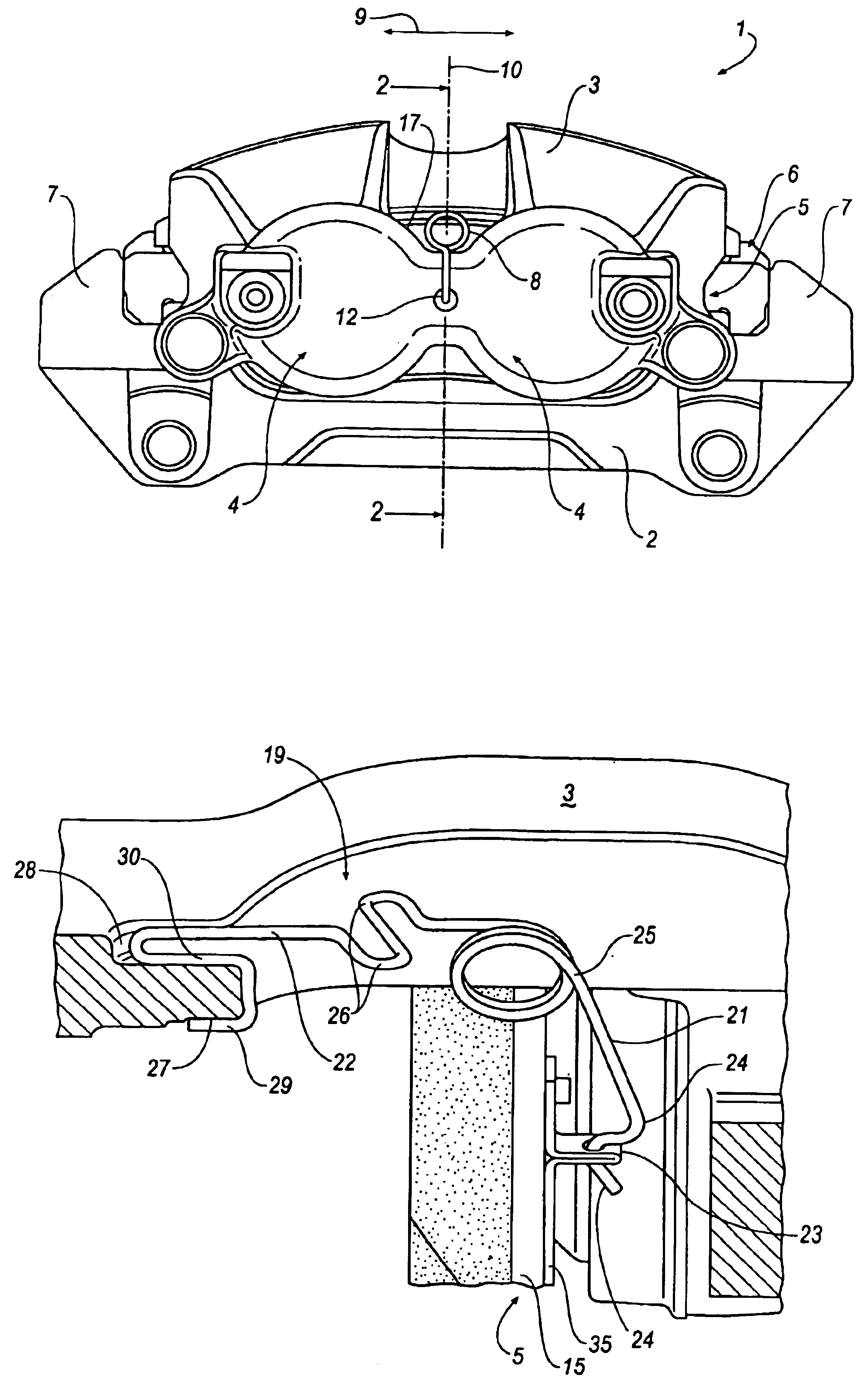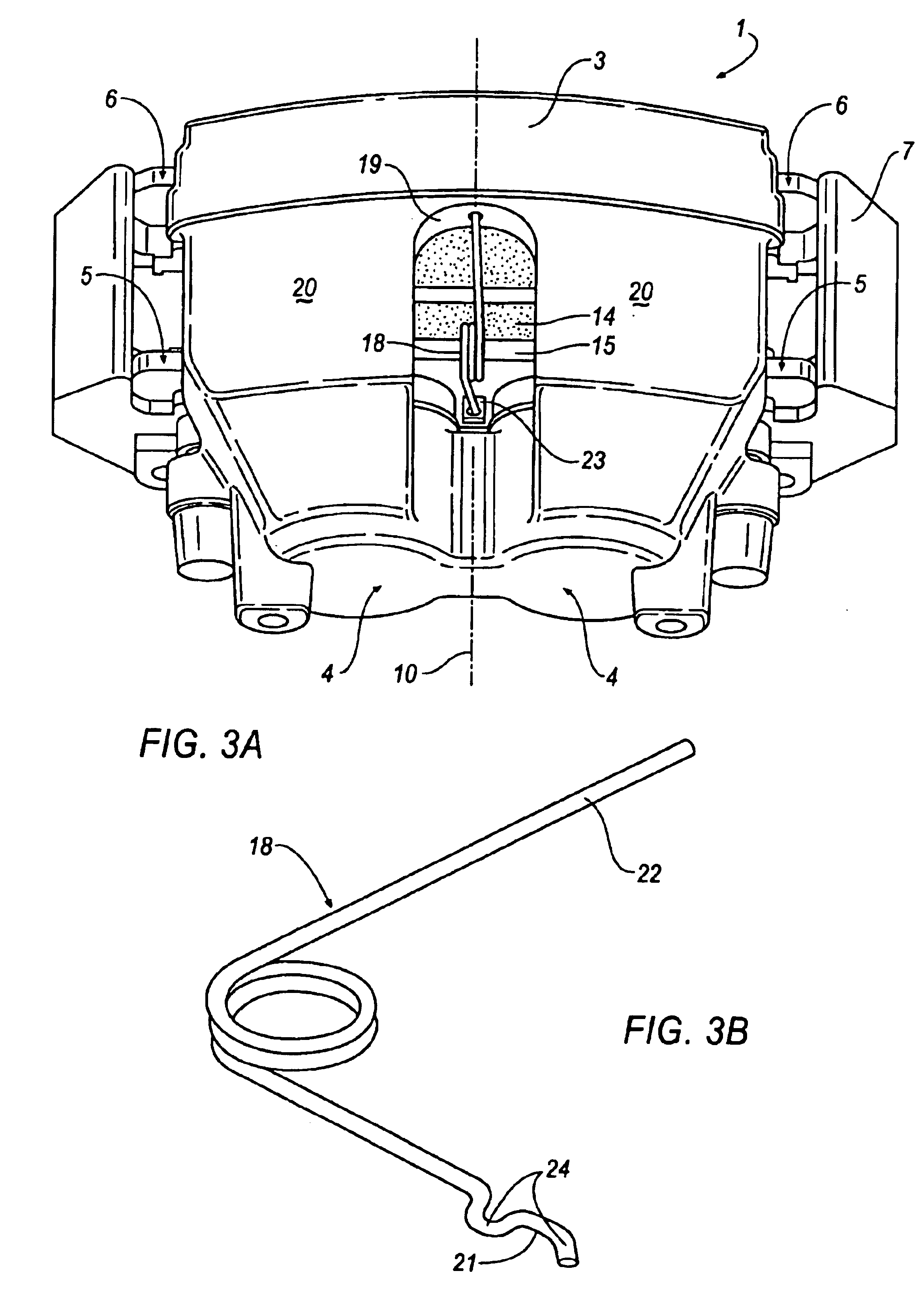Spot-type disc brake with a spring assembly for a brake pad
a brake pad and spring assembly technology, applied in the field of vehicle brakes, can solve the problems of affecting the functioning affecting the operation of the brake pad, and the possibility of removing and losing the reset spring,
- Summary
- Abstract
- Description
- Claims
- Application Information
AI Technical Summary
Benefits of technology
Problems solved by technology
Method used
Image
Examples
Embodiment Construction
[0017]The spot-type disc brake 1 of an automotive vehicle shown in the Figures comprises a brake holder 2 mounted fast on the vehicle and a brake housing 3 slidably mounted on the brake holder 2. More particularly, housing 3 is designed as a brake caliper straddling a brake disc (not shown). On one side of the brake disc, the brake housing 3 includes at least one actuating device 4 for the application of brake pads 5, 6 arranged on either side of the brake disc. Each brake pad 5, 6 includes a friction lining 14 and a carrier plate 15. During a brake application, a first brake pad 5 is applied by the actuating device 4 directly and a second brake pad 6 is pressed due to an axial shift of the brake housing 3 indirectly against the brake disc. In the Figures, embodiments of the brake housing with two actuating devices 4 are shown which are designed as a hydraulic piston-and-cylinder unit. It is of course also possible to use pneumatically, electrically, or mechanically acting actuating...
PUM
 Login to View More
Login to View More Abstract
Description
Claims
Application Information
 Login to View More
Login to View More - R&D
- Intellectual Property
- Life Sciences
- Materials
- Tech Scout
- Unparalleled Data Quality
- Higher Quality Content
- 60% Fewer Hallucinations
Browse by: Latest US Patents, China's latest patents, Technical Efficacy Thesaurus, Application Domain, Technology Topic, Popular Technical Reports.
© 2025 PatSnap. All rights reserved.Legal|Privacy policy|Modern Slavery Act Transparency Statement|Sitemap|About US| Contact US: help@patsnap.com



